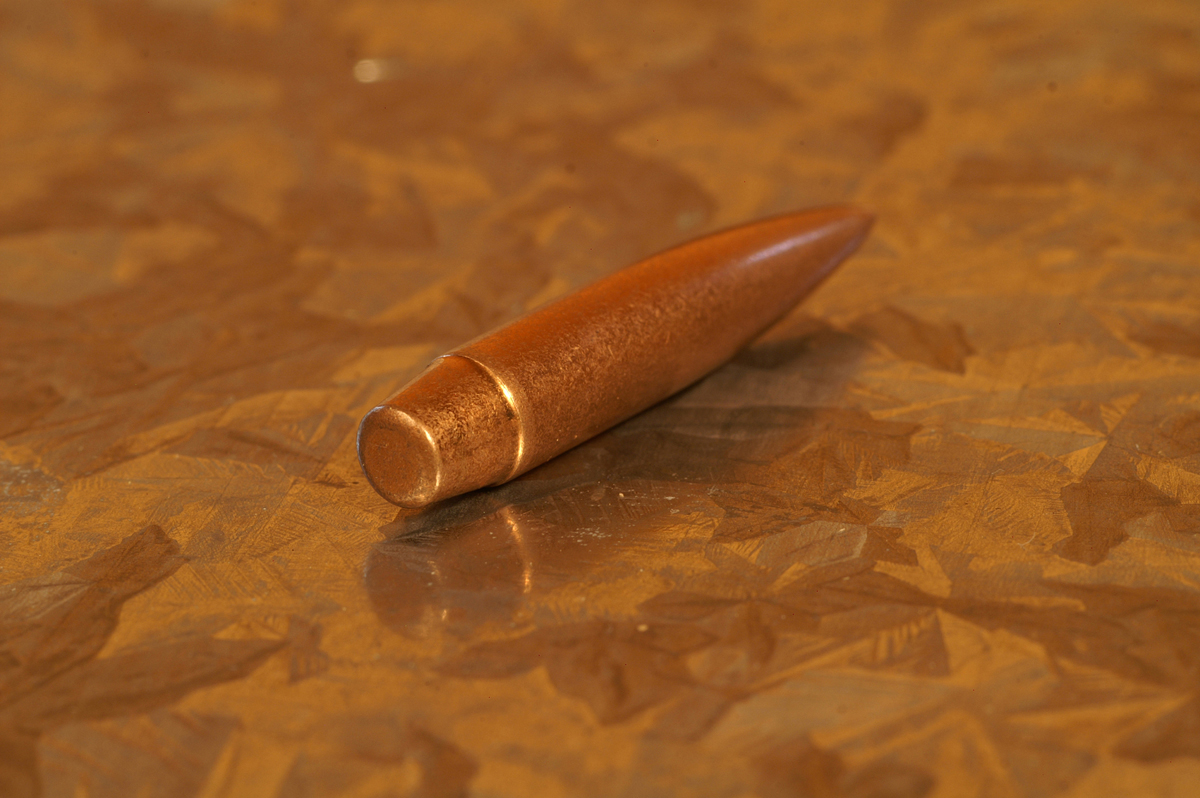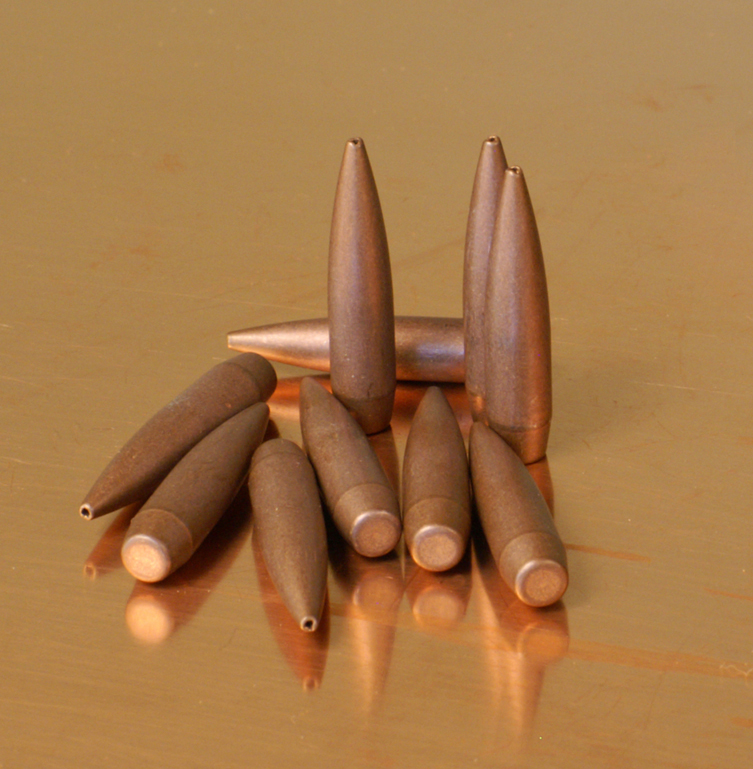The following is a specially-adapted excerpt from the forthcoming book “Top Grade Ammo” by Zediker Publishing. BuyZedikerBooks.com for more.
by Glen Zediker
We talked about rifle barrel throat erosion last time, in descriptive terms. Short course: It’s the area just ahead of the case neck area in a rifle chamber that bears the majority of the “flame cutting” effect of burning propellant gases. The wear in this area determines the accurate life of a barrel. The greatest detractor from accuracy is the roughness that results from the deteriorating steel surface. Of course, the throat is advancing, getting longer, at the same time. After time, the “jump” or gap the bullet has to leap before engaging the lands plays its part in poor on-target performance.
I’ve always followed a “scheduled” replacement plan on barrels, determined, of course, after much experimentation and many measurements. That’s for competition rifles. For others, I have a more-or-less “shoot it until it doesn’t shoot well” approach.
If you chronograph frequently enough, and are using the same load, you’ll see velocities drop as more rounds go through the barrel. This is because of the lengthening throat: more room for expanding gases, lower pressure, lower velocity. I know a few who gauge barrel replacements based around chronograph readings, and the resultant propellant charge adjustment necessary to maintain “new barrel” bullet speed. The general consensus, for a round with approximately .308 Win. case capacity, is 2.0gr. So when it takes another 2 grains of propellant to restore original velocity, that one’s done.
Here are a few more ideas on barrel life, and also a few thoughts on how to keep a barrel shooting better longer.
Last time I made a statement that I should have qualified more, but space is always such a concern in these articles. It was respecting the idea of pulling a barrel, cutting some off its chamber-end, and then rechambering it. This overwrites the eroded area, well most of it. That can only be done for a bolt-action rifle. I said that worked well for chromemoly barrels but not for stainless steel barrels, and the difference is in the “machine-ability” of the steels. It is possible to set back a stainless barrel, but it’s tough to have a
“chatterless” cut result. A little more usually needs to be removed to get good results with stainless, and this, of course, is making the barrel overall that much shorter. Certainly: you have to plan on a set-back at original barrel installation, and that means include enough extra length to compromise. Usually it takes a minimum of 1 inch to get a worthwhile result with chromemoly.
So what can reduce the effects or severity of erosion, which is only to say prolong the life of the barrel? Reasonable does of propellant behind lighter-weight bullets, that’s one. Another is that flat-base bullets do result in less cutting than boat-tails. Flat-base bullets “obturate” more quickly. Obturate means to “block,” but here it means to close a hole, which is a barrel bore, which means to seal it. The angled tail on a conventional boat-tails creates a sort of “nozzle” effect, directing gases to the steel surface. Can’t much be done about that, though, because when we need boat-tails we need them. However! A relatively obscure but well-proven boat-tail design does increase barrel life, and also tends to shoot better though a worn throat. A “rebated” boat-tail has a 90-degree step down from the bullet shank (body) to the tail. It steps down before the boat-tail taper is formed. These obturate fully and quickly. It is common for competitive .308 shooters to switch from the popular Sierra 190gr MatchKing to a Lapua 185 rebated boat-tail when accuracy starts to fall off due to throat wear. Sure enough, the Lapua brings it back for a couple hundred more rounds.
Some propellants burn lower temperatures than others. Some double-based propellants claim this, and, true, if you can be happy with the performance of one, it can extend barrel life a few hundred extra rounds. WW 748 is one of those propellants and my experience with it is that the claims are true. It’s not night-and-day, but there’s a difference. Research to find others.
Coated bullets don’t have any influence on throat erosion, but they tend to perform better though a rough throat. Boron-nitride is the only bullet coating I can recommend. I use it. Do an extra-good job cleaning the throat area in a wearing barrel. Copper and other residues tend to collect more as the steel gets rougher and rougher.











